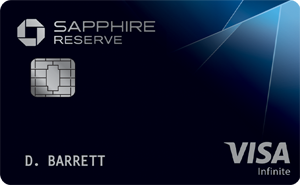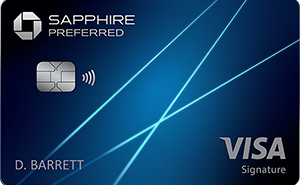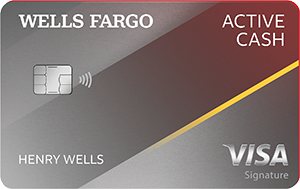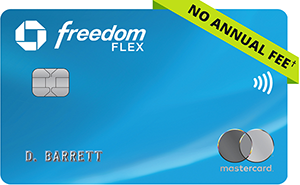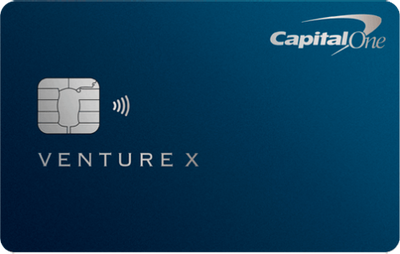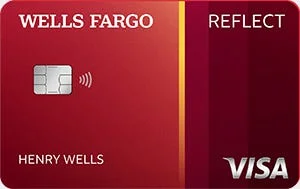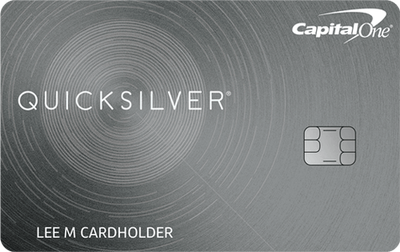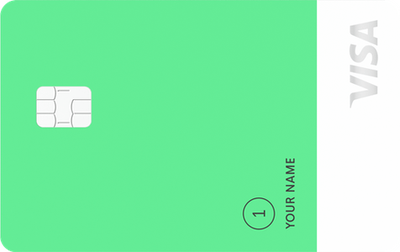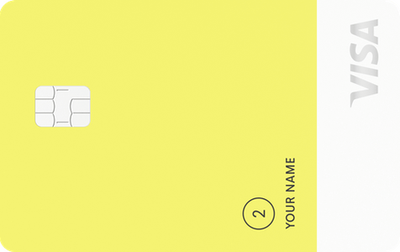Best credit cards of August 2023
Updated 5:00 a.m. ET Aug. 4, 2023
Editorial Note: Blueprint may earn a commission from affiliate partner links featured here on our site. This commission does not influence our editors' opinions or evaluations. Please view our full advertiser disclosure policy.
Credit cards carry several advantages compared to paying in cash. For starters, credit cards come with protections and security from fraudulent purchases. Some cards also offer meaningful benefits like rewards on your spending, low introductory APR offers or welcome bonuses that boost your bottom line. Having and using a credit card responsibly can also help you build a strong credit profile, which in turn can help save you money on other types of loans, like mortgages and car loans.
But not all cards are alike — each one comes with its own unique set of benefits, perks and potential pitfalls. Just like there is no one “best” pizza topping or one “best” pair of jeans, there’s no one best card that will be right for everyone’s unique needs.
So how do you choose the card that’s right for you? Our list of the best credit cards is a great place to start. We analyzed a broad swath of credit cards from a variety of issuers, to curate a list of the very best for several types of cardholders.
Be sure to compare these cards to those on our lists of the best credit cards for each specific purpose to view them outside of the context of the general market. Though we selected the best overall for each specific use or benefit of a card, our list may not have the best card for your unique needs.
-
Chase Sapphire Preferred® Card
: Best midrange travel rewards card
-
Wells Fargo Active Cash® Card
: Best flat-rate cash-back card
-
BankAmericard® credit card
: Best intro APR offer
-
Chase Freedom Flex℠ *
The information for the Chase Freedom Flex℠ has been collected independently by Blueprint. The card details on this page have not been reviewed or provided by the card issuer.
: Best everyday rewards credit card
-
Capital One Venture X Rewards Credit Card *
The information for the Capital One Venture X Rewards Credit Card has been collected independently by Blueprint. The card details on this page have not been reviewed or provided by the card issuer.
: Best travel rewards credit card
-
The Blue Business® Plus Credit Card from American Express *
The information for the The Blue Business® Plus Credit Card from American Express has been collected independently by Blueprint. The card details on this page have not been reviewed or provided by the card issuer.
: Best business credit card
-
Wells Fargo Reflect® Card *
The information for the Wells Fargo Reflect® Card has been collected independently by Blueprint. The card details on this page have not been reviewed or provided by the card issuer.
: Best balance transfer card
-
Capital One Quicksilver Secured Cash Rewards Credit Card *
The information for the Capital One Quicksilver Secured Cash Rewards Credit Card has been collected independently by Blueprint. The card details on this page have not been reviewed or provided by the card issuer.
: Best first secured card to build credit
-
Petal® 1 “No Annual Fee” Visa® Credit Card *
The information for the Petal® 1 “No Annual Fee” Visa® Credit Card has been collected independently by Blueprint. The card details on this page have not been reviewed or provided by the card issuer.
: Best first unsecured credit card
-
Petal® 2 “Cash Back, No Fees” Visa® Credit Card *
The information for the Petal® 2 “Cash Back, No Fees” Visa® Credit Card has been collected independently by Blueprint. The card details on this page have not been reviewed or provided by the card issuer.
: Best unsecured card for less-than-perfect credit
Why trust our credit card experts
Our team of experts evaluates hundreds of credit cards and analyzes thousands of data points to help you find the best card for your situation. We use a data-driven methodology to determine each rating. Advertisers do not influence our editorial content. You can read more about our methodology below.
- 250+ cards analyzed.
- 20+ data points considered.
- 5-step fact-checking process.
Best credit cards of August 2023
Earn 60,000 bonus points after you spend $4,000 on purchases in the first 3 months from account opening. That’s $750 when you redeem through Chase Ultimate Rewards®.
Earn a $200 cash rewards bonus after spending $500 in purchases in the first 3 months
N/A
Earn a $200 bonus after you spend $500 on purchases in your first 3 months from account opening,
Earn 75,000 bonus miles when you spend $4,000 on purchases in the first 3 months from account opening, equal to $750 in travel.
N/A
N/A
N/A
N/A
None
The Chase Sapphire Preferred® Card ranks among the best credit cards largely in thanks to how it balances its excellent rewards, benefits and features against a moderate annual fee. The welcome bonus remains a central attraction to new cardholders, as Chase Ultimate Rewards has become one of the industry’s most powerful rewards currencies.
- Annual fee: $95.
- Rewards: Earn 5 points per $1 on travel purchased through Chase Ultimate Rewards®, 3 points per $1 on dining, select streaming services, and online grocery purchases (excluding Walmart, Target and wholesale clubs), 2 points per $1 on all other travel purchases and 1 point per $1 on all other purchases.
- Welcome bonus: Earn 60,000 points after spending $4,000 on purchases in the first three months of account opening.
- Foreign transaction fees: $0.
- Other benefits and drawbacks: The Chase Sapphire Preferred offers a more affordable option to the $550-annual-fee premium Chase Sapphire Reserve®. The Sapphire Preferred offers travel coverages and purchase protections and points are worth 25% more value on travel booked through Chase Ultimate Rewards on travel and grants bonus points equal to 10% of your total purchases made the previous year. Plus, the card allows you to transfer points to multiple airline and hotel loyalty partners, all for a relatively affordable annual fee.
The Wells Fargo Active Cash® Card leads the flat-rate cash-back card market. With no annual fee and a generous welcome bonus, the card’s low intro APR offer and extra features make it worth considering for anyone who wants to earn straightforward rewards.
- Annual fee: $0.
- Rewards: Earn 2% cash rewards on purchases (unlimited).
- Welcome bonus: Earn $200 cash rewards bonus after spending $500 in purchases in the first three months of account opening.
- Foreign transaction fees: 3%.
- Other benefits and drawbacks: The Wells Fargo Active Cash card offers a moderate number of largely convenience benefits for cardholders, such as cell phone protection, zero liability protection and security features. Although it comes with a few perks, the primary attraction here is the excellent flat-rate rewards rate.
The BankAmericard® credit card offers an intro APR as a headlining and primary feature. With no rewards and few extra benefits, the card is best for those trying to finance a large purchase or transfer a balance from another card.
- Annual fee: $0.
- Rewards: None.
- Welcome bonus: None.
- Foreign transaction fees: 3%.
- Other benefits and drawbacks: The BankAmericard’s introductory APR on purchases and balance transfers for 21 billing cycles requires users to keep up with minimum payments during the intro period and pay off the balance in full before the end of the period. If you’re transferring a balance, beware of the 3% of the amount of each transaction balance transfer fee. No penalty APR means no extra fees for late payments or other penalties and Bank of America offers credit education opportunities, giving cardholders a better shot at understanding and managing credit accounts. Additionally, users will have access to their FICO Score for free, updated monthly.
The information for the Chase Freedom Flex℠ has been collected independently by Blueprint. The card details on this page have not been reviewed or provided by the card issuer.
The Chase Freedom Flex℠ * The information for the Chase Freedom Flex℠ has been collected independently by Blueprint. The card details on this page have not been reviewed or provided by the card issuer. offers value to cardholders who want to maximize rewards and don’t mind capped rotating quarterly categories. The card offers flexibility, an intro APR offer and a generous welcome bonus.
- Annual fee: $0.
- Rewards: Earn 5% cash back on up to $1,500 in categories that rotate quarterly (requires activation), 5% cash back on travel purchased through Chase Ultimate Rewards®, 3% cash back on dining and drugstores and 1% cash back on all other purchases.
- Welcome bonus: Earn a $200 bonus after spending $500 on purchases in the first three months of account opening.
- Foreign transaction fees: 3% of each transaction in U.S. dollars.
- Other benefits and drawbacks: The Chase Freedom Flex card offers a variety of benefits to cardholders, including cash-back rewards that never expire, require no minimum redemption and multiple redemption options. The card provides zero liability protection, purchase protection, extended warranty protection, trip cancellation/interruption insurance, cell phone protection and auto rental collision damage waiver. A three-month complimentary DashPass membership with 50% off for the next nine months; three months of no-extra-charge Instacart+ and up to $10 in statement credit each quarter through 07/31/2024 with eligible Instacart purchases; $5 Lyft credit when you take three rides in a calendar month; spend $20 at Fandango or on Fandango’s streaming service and receive a $5 Fandango reward; and one year of complimentary ShopRunner membership.
The information for the Capital One Venture X Rewards Credit Card has been collected independently by Blueprint. The card details on this page have not been reviewed or provided by the card issuer.
The Capital One Venture X Rewards Credit Card * The information for the Capital One Venture X Rewards Credit Card has been collected independently by Blueprint. The card details on this page have not been reviewed or provided by the card issuer. ’s annual travel credit and mile bonus can offset the card’s annual fee if fully used, making it an excellent premium travel credit card option. The convenient features, thorough purchase and travel protections, airport lounge access, Capital One Travel and the ability to transfer miles to travel and hotel partners, makes this card stand tall among premium card options.
- Annual fee: $395.
- Rewards: Earn 2 miles per $1 on purchases, 5 miles per $1 on flights booked through Capital One Travel and 10 miles per $1 on hotels and rental cars booked via Capital One Travel.
- Welcome bonus: Earn 75,000 miles after spending $4,000 on purchases in the first three months of account opening.
- Foreign transaction fees: None.
- Other benefits and drawbacks: The Capital One Venture X offers excellent value through its $300 annual statement credit reimbursement for travel bookings made through Capital One Travel and its 10,000-mile card anniversary bonus. Among its many other benefits, the card offers airport lounge access, primary rental car coverage, a cell phone protection benefit, the ability to transfer miles to travel and hotel partners and more*. The card’s miles don’t expire and bookings made with Capital One aren’t subject to blackout dates. Card ownership also comes with Hertz President’s Circle status*.
The information for the The Blue Business® Plus Credit Card from American Express has been collected independently by Blueprint. The card details on this page have not been reviewed or provided by the card issuer.
The Blue Business® Plus Credit Card from American Express * The information for the The Blue Business® Plus Credit Card from American Express has been collected independently by Blueprint. The card details on this page have not been reviewed or provided by the card issuer. (terms apply) offers excellent value to business owners looking for an effective way to earn simple rewards and get some help managing finances. It also charges no annual fee and gives cardholders access to purchase protections and other convenient features.
- Annual fee: $0.
- Rewards: Earn 2 Membership Rewards points per $1 on everyday business purchases up to the first $50,000 spent per year, then 1 point per $1 on all other purchases.
- Welcome bonus: None.
- Foreign transaction fees: 2.7% of each transaction after conversion to US dollars.
- Other benefits and drawbacks: The Blue Business Plus Card from American Express offers extended warranty protection¹, purchase protection¹, Amex Offers, Global Assist® Hotline², car rental loss and damage insurance³, no-extra-charge employee cards, the ability to connect your account to QuickBooks, Vendor Pay by Bill.com and digital features including the American Express® App and online statements. Enrollment is required for select benefits. Though it doesn’t offer the major credits associated with some of Amex’s premier luxury cards, it also doesn’t charge an annual fee.
The information for the Wells Fargo Reflect® Card has been collected independently by Blueprint. The card details on this page have not been reviewed or provided by the card issuer.
The Wells Fargo Reflect® Card * The information for the Wells Fargo Reflect® Card has been collected independently by Blueprint. The card details on this page have not been reviewed or provided by the card issuer. is a top-notch balance transfer card for its extra-long intro APR period. That, plus no annual fee, makes the card an attractive option to move existing debt from higher-interest cards, but the card doesn’t offer much else once the intro period expires.
- Annual fee: $0.
- Rewards: None.
- Welcome bonus: None.
- Foreign transaction fees: 3%.
- Other benefits and drawbacks: The Wells Fargo Reflect Card’s benefits include cell phone protection, which covers up to $600 for damage or theft when you pay your monthly phone bill with your card (subject to a $25 deductible and two claims per 12-month period). Otherwise, the card offers only convenience benefits. These include My Wells Fargo Deals, where you can get special offers and discounts from select merchants; Roadside dispatch for assistance with a flat tire, dead battery or other emergency services; and Credit Close-up, a free credit score monitoring service.
The information for the Capital One Quicksilver Secured Cash Rewards Credit Card has been collected independently by Blueprint. The card details on this page have not been reviewed or provided by the card issuer.
The Capital One Quicksilver Secured Cash Rewards Credit Card * The information for the Capital One Quicksilver Secured Cash Rewards Credit Card has been collected independently by Blueprint. The card details on this page have not been reviewed or provided by the card issuer. offers those without a lengthy or strong credit history an opportunity to establish and build credit. This secured card offers excellent rewards for a card designed for those inexperienced with credit or those plagued with bad credit, but it does require a deposit.
- Annual fee: $0.
- Rewards: Earn 1.5% cash back on purchases and 5% cash back on hotels and rental cars booked through Capital One Travel.
- Welcome bonus: None.
- Foreign transaction fee: None.
- Other benefits and drawbacks: The Capital One Quicksilver Secured Rewards card requires a refundable deposit as collateral for the revolving line of credit, but Capital One conducts automatic account reviews to evaluate the potential to be upgraded to an unsecured option. Rewards don’t expire and may be redeemed as a check or statement credit or on the purchase of gift cards. Convenience features include autopay, the ability to add authorized users and 24/7 customer service.
The information for the Petal® 1 “No Annual Fee” Visa® Credit Card has been collected independently by Blueprint. The card details on this page have not been reviewed or provided by the card issuer.
The Petal® 1 “No Annual Fee” Visa® Credit Card * The information for the Petal® 1 “No Annual Fee” Visa® Credit Card has been collected independently by Blueprint. The card details on this page have not been reviewed or provided by the card issuer. (issued by WebBank) offers first-time credit card users looking to build their credit an unsecured option with no annual fee. Though its reward program lacks consistency and its standard APR is rather high, Petal offers many of the major convenience benefits available from major issuers.
- Annual fee: $0.
- Rewards: Earn 2% to 10% cash back at select merchants.
- Welcome bonus: None.
- Foreign transaction fees: None.
Other benefits and drawbacks: The Petal 1: Leap program offers a range of benefits to cardholders, including the ability to track credit score, receive push notifications for account activity, set up autopay and use digital wallet technologies. Additionally, the program reports to all three major credit bureaus. Since Petal uses a “cash score” to evaluate creditworthiness, no credit check is required, although you may be required to supply banking and other financial information.
The information for the Petal® 2 “Cash Back, No Fees” Visa® Credit Card has been collected independently by Blueprint. The card details on this page have not been reviewed or provided by the card issuer.
The Petal® 2 “Cash Back, No Fees” Visa® Credit Card * The information for the Petal® 2 “Cash Back, No Fees” Visa® Credit Card has been collected independently by Blueprint. The card details on this page have not been reviewed or provided by the card issuer. (issued by WebBank) offers an opportunity for those with less-than-perfect credit to rebuild and strengthen credit without paying a deposit. This unsecured card offers flexible terms and no annual fee, making it a great option for those trying to find a new way to grow.
- Annual fee: $0.
- Rewards: Earn 1% cash back right away and up to 1.5% cash back on eligible purchases after making 12 on-time monthly payments. Plus, earn 2% to 10% cash back at select merchants.
- Welcome bonus: None.
- Foreign transaction fee: $0.
- Other benefits and drawbacks: The Petal 2 offers a variety of features to help cardholders manage a credit rebuild. Cardholders can track their credit score, pick payment strategies and receive push notifications for account activity. Autopay is available for added convenience and all major credit bureaus are reported to with each transaction, meaning responsible use will definitely help improve users’ credit. No credit check is required when signing up for the program, as Petal uses a “cash score” to help determine creditworthiness.
Best credit cards
With so many options available, finding the best credit card for you can present an overwhelming challenge. Although many credit cards offer a wide variety of benefits from rewards to low APR offers to travel and purchase protections and perks, the most important consideration is finding the card that best fits your spending habits and financial situation. To help you narrow down your search, consider the annual fees associated with the card, the annual percentage rate (APR),rewards and other helpful benefits.
How do credit cards work?
Credit cards extend you a loan in the form of a line of credit. When you use a credit card, you’re borrowing money from the credit card company to make a purchase, then paying it back — with interest, if you don’t pay the balance in full by the end of the billing cycle.
Interest rates are typically expressed as an annual percentage rate or APR. The APR in your credit card agreement shows the interest applied to a balance over the course of a year, although most credit cards actually charge interest on your average daily balance.
Credit cards typically feature grace periods, which is a period of time before the transactions you make begin to accrue interest. If you pay off your balance during this grace period, which ends at the billing statement due date, you’ll avoid paying interest on your purchases. If you don’t pay off your balance before the due date, you lose the grace period. This means that if you carry a balance past your due date, not only will the carried balance accrue interest, but so will every purchase made after that .
The maximum amount you can borrow is your credit limit, but in order to maintain good credit you never want to “max out” a credit card. Instead, aim to never spend more than 30% of your credit limit before paying down the balance. The amount of credit you use, also known as your credit utilization rate, should be under 30%.
When you make a purchase with your credit card, you are responsible for paying the full balance each month, including any interest charges. Paying off your balance in full, before the due date each month is the only way to avoid paying interest. Failing to make minimum payments will have a negative impact on your credit score.
Different types of credit cards
The most common types of credit cards include cash-back cards, rewards cards, balance transfer cards, low-interest cards and credit building cards.
Cash-back credit cards offer a percentage of your spending back as a reward, while rewards cards often earn a percentage of your spending back in the form of points or miles that can be redeemed for travel, merchandise or gift cards. Balance transfer cards allow you to transfer existing debt from one card to another (fees often apply) and may offer an introductory APR to help finance the transferred debt over a period of time. Meanwhile, low-interest cards offer a lower APR than other cards.
Introductory APRs may also extend to purchases, meaning a credit card can be used to finance medium to large purchases over an introductory period while paying a lower or no interest rate. Make sure you have a plan to pay the balance off since a high interest rate will likely apply when the introductory period ends. Always have a plan to pay off any balance before an intro plan ends.
Credit-building cards are intended to help those new to credit or trying to rebuild an opportunity to improve their credit standing. These can be secured cards, which typically require a deposit equal to the amount of credit offered, or there are some unsecured cards designed for those without strong credit.
Good secured cards should report payment activity to major credit bureaus, allowing cardholders to build stronger credit. Many secured cards allow users to upgrade to unsecured cards after “proving” their creditworthiness with several months of on-time payments and responsible use.
How to choose the best credit card for you
“While there are dozens of great credit cards, American Express, Discover and Bank of America are always at or near the top of the annual J.D. Power Credit Card Satisfaction Study. They should, at the very least, be on your list of options,” said John Ulzheimer, a long-time veteran of the credit industry and founder of CreditExpertWitness.com
When choosing a credit card, it’s important to consider your spending habits and financial goals first. Consider how much you can afford to pay in annual fees (or if you want to pay annual fees at all), what type of rewards you want and what kind of APR you’re comfortable with.
We never recommend carrying a balance on a credit card. Other types of financial products, including personal loans, typically offer much lower interest rates. If you need to borrow money for a period of time longer than a credit card billing cycle, we recommend using another form of loan.
It’s important to read the fine print on any credit card offer to make sure you understand any additional fees and restrictions. Also make sure to research the customer service and fraud protection policies of the card issuer before you apply — especially if you haven’t carried a credit card before. You’ll want to ensure your questions can be answered when you have them.
How to get a credit card
Applying for a credit card is a relatively easy process, but there are a few things to consider before applying. A healthy credit score can help you obtain approvals for better, more rewarding cards. If you don’t have much of a credit score, consider applying first for a student or secured card and improving your credit before applying for a high-end rewards card.
You can check with any and all of the three major credit bureaus to obtain copies of your credit reports. These bureaus — Experian, Equifax and Transunion — keep files on consumers to help lenders establish creditworthiness. Your credit will be checked by credit card issuers when you apply, so ensuring your credit report doesn’t contain any errors can lead to a better outcome in the application process.
You should also compare different cards to find the best fit for your budget and lifestyle. After you’ve chosen a card that you want to apply for, you can apply online, by phone or mail. To complete the application process, you’ll need to provide some personal information, such as your name, address and Social Security Number. This identifying information is how an issuer can obtain a copy of your credit report to evaluate the risk in extending you a line of credit.
Many issuers will also ask for your salary or other financial information, like your monthly rent or mortgage expenses. This may factor into how much of a credit line they are comfortable granting you.
What are credit card rewards and how do they work?
Credit card rewards are incentives offered by credit card companies to encourage customers to use their cards more often. Rewards can vary from cash back on purchases to points or miles redeemable for travel, merchandise, gift cards and more. Reward structures also vary from flat-rate cash back to bonus rates on rotating quarterly spend categories with activation requirements.
If a card offers a welcome bonus, you may need to spend a certain amount within a certain period of time to earn that lump-sum reward. Some cards may charge annual fees that must be paid in order to receive rewards, so it’s important to calculate the value of rewards and benefits a card offers and balance it against the cost of card ownership.
How many credit cards should I have?
The number of credit cards you should carry depends on your financial goals and spending habits. You can have as many cards as you can manage or no cards at all. You should avoid applying for too many cards at once, as each application will make an inquiry to your credit report that can have a temporary negative impact on your score.
If you’re trying to build your credit, one low-limit card may be enough, but if you’re looking to maximize rewards, two or three cards with different rewards programs may be more helpful. Be careful not to rip off more plastic than your wallet can chew, however: Multiple accounts means multiple statements, due dates and balances to manage.
Types of credit card companies
There are several types of companies involved with the credit card process, including card networks, card issuers and other financial institutions. These financial institutions may include traditional banks, online banks, credit unions and other financial tech companies.
Each institution involved in a credit card transaction takes part of the transaction fee charged to the vendor for the privilege of accepting credit card payments. This fee is typically passed onto the consumer via an increase in the cost of goods or services, but in some cases may be directly charged to the vendor.
Credit card networks
Credit card networks facilitate card transactions by regulating what transactions may be made using a card. Examples include Visa, Mastercard, American Express and Discover.
Credit card issuers
Credit card issuers are typically banks, credit unions and other financial institutions. Examples include Chase, Wells Fargo, Capital One and Bank of America. Discover and American Express are both card issuers and credit card networks.
Payment processors
Payment processors connect vendors with card networks and issuers, allowing vendors to accept payments via credit card.
Important credit card terms
When it comes to credit cards, understanding a few key terms can help you out quite a bit. The annual percentage rate (APR) is the interest rate you will be charged if you carry a balance on your card. The grace period is the amount of time you have to pay your balance in full before interest is charged. The minimum payment is the amount you must pay each month to keep your account in good standing. The balance transfer fee is the fee charged when you transfer a balance from one card to another.
How does credit card interest work?
Credit card interest is typically only charged when you carry a balance on your card. The interest rate can vary from card to card, but typically ranges from 10% to 30%. Interest is charged on the outstanding balance each month and is compounded daily. If you pay the balance in full each month, you will not be charged any interest, but if you fail to pay off a balance, you’ll typically be charged interest on all new purchases until you’ve paid off your balance in full for at least two months.
Pros and cons of credit cards
Credit cards can be great tools for managing your finances, but they do come with several important drawbacks. On the plus side, credit cards offer convenience, protection against fraud and rewards. On the downside, it’s easy to rack up debt and interest payments if you’re not careful. Additionally, some cards may have high annual fees or require good credit to qualify. Ultimately, it’s important to weigh the specific benefits you receive against the risks and consequences you take by making charges to a credit card instead of simply paying with cash or a check.
Methodology
Our credit cards team has spent hours analyzing hundreds of credit cards. We took a deep dive into the details of each product and that analysis, combined with our years of experience covering credit cards, informed us as we chose the best credit cards across a wide variety of categories. This list culled the top picks in each category.
The easiest type of credit card to obtain is typically a secured credit card, which requires a refundable security deposit as collateral for a line of credit. Secured credit cards are usually available to people of all credit backgrounds — including those without any credit — and can help them build or rebuild their credit scores.
The best credit card issuer for you will depend on your individual needs. Different credit card companies offer different types of cards with various rewards, benefits and customer service options. It is important to compare different credit card companies to find the one that is best suited to your financial needs and goals.
Applying for a credit card can temporarily lower your credit score due to a hard inquiry on your credit report, but the impact is lighter than many other negative actions like skipping or defaulting on your payments. If you apply for too many credit cards in a short time period, it may have a more consequential impact.
If you’re approved for the credit card, your credit score may increase thanks to the new account and the increased amount of overall available credit you have relative to existing debt. Making on-time payments is the best way to strengthen your credit.
In the United States, you must be at least 18 years old to open a credit card account. Those under 21 must prove independent income or provide a co-signer. Some credit card companies allow minors to hold authorized user cards, but the primary account holder must be 18 or older.
For Capital One products listed on this page, some of the above benefits are provided by Visa® or Mastercard® and may vary by product. See the respective Guide to Benefits for details, as terms and exclusions apply.
Upon enrollment, accessible through the Capital One website or mobile app, eligible cardholders will remain at upgraded status level through December 31, 2024. Please note, enrolling through the normal Hertz Gold Plus Rewards enrollment process (e.g. at Hertz.com) will not automatically detect a cardholder as being eligible for the program and cardholders will not be automatically upgraded to the applicable status tier. Additional terms apply.
¹Eligibility and Benefit level varies by Card. Terms, Conditions and Limitations Apply. Please visit americanexpress.com/benefitsguide for more details. Underwritten by AMEX Assurance Company.
²Eligibility and Benefit level varies by Card. Terms, Conditions and Limitations Apply. Please visit americanexpress.com/benefitsguide for more details. Card Members are responsible for the costs charged by third-party service providers.
³Eligibility and Benefit level varies by Card. Terms, Conditions and Limitations Apply. Please visit americanexpress.com/benefitsguide for more details. Underwritten by AMEX Assurance Company. Car Rental Loss or Damage Coverage is offered through American Express Travel Related Services Company, Inc.
Editor’s Note: This article contains updated information from previously published stories:
Blueprint is an independent publisher and comparison service, not an investment advisor. The information provided is for educational purposes only and we encourage you to seek personalized advice from qualified professionals regarding specific financial decisions. Past performance is not indicative of future results.
Blueprint has an advertiser disclosure policy. The opinions, analyses, reviews or recommendations expressed in this article are those of the Blueprint editorial staff alone. Blueprint adheres to strict editorial integrity standards. The information is accurate as of the publish date, but always check the provider’s website for the most current information.

